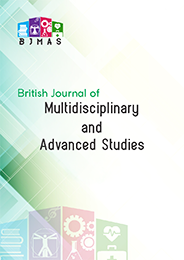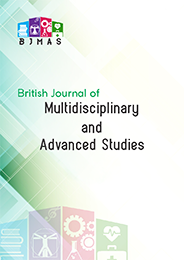A Comprehensive Review on Sources of Potentially Toxic Metals and Their Impact on Aquatic, Terrestrial Animals and on Humans
DOI:
https://doi.org/10.37745/bjmas.2022.04921Abstract
Potentially toxic metals such as Zn, Cu, and Co are an integral part of human life as they are part of several essential enzymes and metalloenzymes, while metals Pb, Cd, Cr, Hg and metalloid arsenic are nonessential but highly toxic. The Earth's crust is the natural source of potentially toxic metals, which enter the environment through various geological and anthropogenic processes. Due to anthropogenic activities and the persistence of these metals potentially toxic metals are present in all the compartments of the environment (groundwater, surface water, potable water, seawater, soil, vegetables, fruits, crops, fish, seafood etc.). Due to industrialization, urbanization, and indiscriminate anthropogenic activities, the concentration of these toxic metals is increasing in water, soil, and food sources. World Health Organization (WHO) has classified these metals as one of the major pollutants of the 21st century. Dermal absorption and ingestion are the primary pathways for the uptake of these metals by aquatic animals (E.g., fish, and seafood), while plant uptake occurs via absorption from soil or through air/dust particles. Inhalation of air/dust particles, ingestion of contaminated water, beverages, and food and dermal uptake by skin from contaminated water are the main pathways of uptake of these toxic metals by mammals. If these toxic metals in the aquatic animal body are accumulated beyond tolerable limits it may cause growth retardation, liver lesions, kidney damage and infertility. Both the quality and quantity of crop yield are adversely affected when these toxic metals are accumulated in plants. In humans and other mammals these metals generate reactive oxygen species, inhibit enzyme activities, and cause DNA structural and functional impairments. Accumulation of these metals alters liver, kidney and lung functions. Prolonged exposure to these metals negatively impacts the central nervous system and causes neurological degenerative diseases (Alzheimer's disease, Parkinson's disease). The health impact of the potentially toxic metals on aquatic and terrestrial animals and on humans is recorded in this review.
Downloads
Downloads
Published
Versions
- 13-07-2025 (2)
- 13-07-2025 (1)












